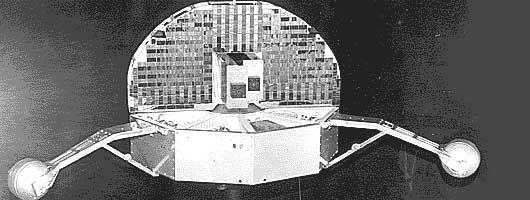OSO-1
Orbiting Solar Observatory-1

Mission Objectives
The primary objectives of the OSO-1 mission were 1) for spectrometer studies of the electromagnetic radiation from the sun in the ultraviolet and x-ray regions of the spectrum, and 2) to determine the performance of the satellite-borne solar pointing control. Secondary objectives were 1) solar radiation measurements using narrow band detectors to study specific regions of the solar spectrum, 2) gamma-ray experiments to study solar emission in the energy regions 0.1 to 500 MeV, 3) neutron measurements to determine the neutron flux from the earth and sun, 4) to study the time variations of solar UV, x-ray, and gamma-ray emissions from the sun, 5) investigation of surface materials for spacecraft temperature control, and 6) measurement of momenta and kinetic energies of impacting interplanetary dust particles.
The pointed instruments were
- the Solar X-ray Experiment--X-ray Spectrometer from Goddard Space Flight Center
- the Solar Ultraviolet Experiment--Hydrogen Lyman Alpha Profile from the University of Colorado
- the Alternate Pointing Experiment Package, which consisted of
- Gamma-Ray Monitoring (0.510 MeV)
- X-ray Monitoring (20-100 keV)
- X-ray Monitoring (1-8 Angstroms)
- the Dust Particle Experiment.
The wheel instruments were
- the Solar Radiation Experiment (3800-4800 Angstroms) from Goddard Space Flight Center
- the Solar Ultraviolet (1100-1250 Angstroms) from Goddard Space Flight Center
- the Solar Gamma Rays Experiment (0.2-1.5 MeV) from Goddard Space Flight Center
- the Solar Gamma Rays Experiment (50 keV - 3 MeV) from the University of Minnesota
- the Solar Gamma Rays Experiment (100-500 MeV) from the University of Rochester
- the Neutron Monitor Experiment from the University of California
- the Lower Van Allen Belt Studies from the University of California
- the Emissivity Stability of Surfaces in a Vacuum Environment from Ames Research Center.
OSO-1 Information
Mission Objectives
Spacecraft
Gamma-ray Experiment
Results
Publications